It isn’t always the case that you need the heart to survive.
Some animals live their whole lives without a heart to pump blood around in their bodies. They are remarkable creatures that exist without a circulatory system of blood and other nutrients to fuel them.
Do all animals have hearts?
Some animals can live without a heart. They are not dependent on blood being pumped around to the internal organs. They may be so small that they are not dependent on nutrients being pumped around in the body. Other animals have no organs at all and therefore have no need for a heart.
Let’s start by taking a good look at some of these species without hearts:
Table of Contents

Why do Most Animals Need a Heart?
The function of the heart is to pump the blood around.
Why?
Because the blood carries oxygen and nutrients for the body.
So in order for the body and the internal organs to function properly, they are 10% dependent on the constant flow of blood.
These Animals Do Not Have A Heart
Now, let’s look at a few animals that are NOT dependent on a flow of oxygen and nutrients.
Look at how they can function and live without the life-giving oxygen that humans (as well as most animals) are so dependent on:
1) Jellyfish

The Jellyfish is a very simple and primitive creature. It doesn’t even have a brain.
A jellyfish has no heart because it has no blood flowing around inside its body.
The Jellyfish is truly strange because it mostly floats around in the ocean unconsciously. Some jellies can grow up to 8 feet (2,5 meters) and when you add the tentacles we are talking more than 50 feet! (15 meters).
It is by far the biggest animal without a heart.
A jellyfish will eat whatever swims by, grabbing tiny fish and Zooplankton with its tentacles in order to direct the food into its mouth. Later, once it has digested the food, waste will leave the jellyfish body through that same opening.
On top of these cool facts, it can even regenerate itself. Just like a salamander can regrow a new tail!
This has led scientists to point out that the Jellyfish does not have a maximum life span. If you hurt it or it bumps into a coral and loses a piece of itself, it simply will just grow that piece again.
Because there is no heart or organ system to eventually grow old and to fail, scientists suspect that maybe the Jellyfish can even live eternally!
Check out our article, Why Do Humans Live Longer Than Animals? for more information on animal lifespans!
2) Flatworms

The Flatworms are so flat they have no heart.
They have no circulatory system at all and they have no respiratory organs such as lungs.
Instead, they rely on a process called “diffusion” to circulate life-giving oxygen and nutrients transported through the body.
Diffusions is a process where the oxygen and nutrients will simply flow by themselves as the worm moves.
No sort of pump is being used here.
The Flatworms are amazing because they can regenerate. Much like Jellyfish, you can cut off one part and another grows back. But the severed part also continues to grow to become its own Flatworm!
Scientists have managed to “spawn” more than 100 worms from one single Flatworm!

3) Corals & Polyps
Corals also have no heart.
They are much simpler animals and many people think corals are flowers or plants. But in fact, corals are animals.
Corals have no blood or vessels so there’s no need for a heart!
They live off of Zooplankton and oxygen from photosynthesis made by tiny plant-like creatures that grow on the corals.
Five More Simple Sea Creatures Without Hearts:
Other sea creatures also live without a heart. That’s not so hard to believe when you see them.
They are super-simple creatures as well and they don’t have internal organs.
Here is a list of these animals:
- Starfish
- Sponges
- Sea Anemones
- Sea Lilies
- Sea Cucumbers
The Sea Cucumbers are probably the only animal from the small list above that does look a bit like an animal that could have a heart.

Animals With More Than One Heart:
Actually, we also find animals with multiple hearts.
Let’s try and uncover these creatures and see why they need an additional heart and what it is used for.
1) Octopi Have Three Hearts:
Octopuses have three hearts.
They have a closed circulatory system like mammals that carries oxygen and nutrients around the body.
Let’s take a closer look at what their hearts do:
- The Main Heart (the systemic heart)
- This heart is in charge of pumping the blood around in the body of the octopus.
- Only active when the Octopus is not moving. As soon as it starts swimming, this heart will stop pumping.
- The Two Other Hearts (the branchial hearts)
- These two hearts are in charge of pumping the blood through the two gills.
Octopus blood has a high level of copper-proteins called hemocyanin. This causes the blood to be blue instead of red.
You can read more about this and 17 Animals With Colorful Blood (And Why)!
This weird looking fella is also an octopus and it is the Dumbo Octopus.
It will swallow its prey whole, so it’s not as friendly as it might look with the cute little fins on the sides.
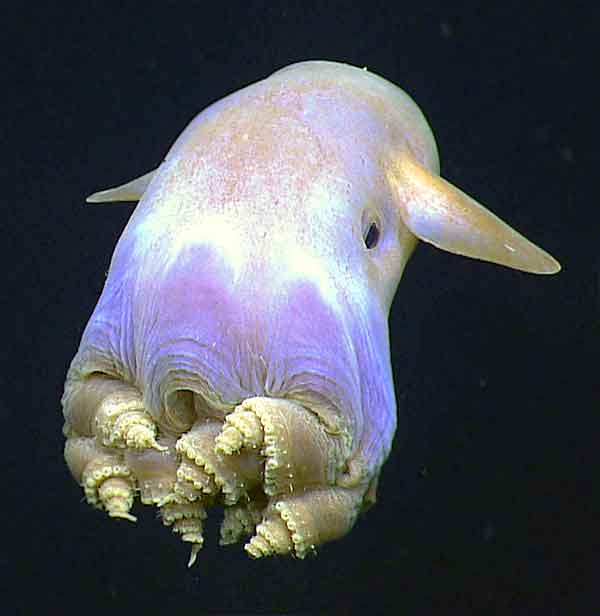
We have added a few more images of octopi at the end of the post simply because we love how they look!
2) The Hagfish Has Four Hearts:
Another weird animal with multiple hearts is the Hagfish.
It has four hearts!
Let break it down and see what they do:
- The Main Heart (The systemic hearts)
- Just like with the octopi, this heart is in charge of pumping the blood around inside the vessels in order to move oxygen and nutrients.
- The 3 Other Hearts (Auxiliary hearts)
- These hearts work as assistants to the main hearts.
- They are often referred to as accessory pumps.
The hagfish has one of the lowest blood pressure levels of all vertebrates (animals with a backbone or spinal column).

3) Earthworms Have 5 Hearts:
We’re talking about the type of worm you can dig up in your garden.
Some people argue that a classic earthworm has 5 hearts.
This is not entirely true as the pump is quite different from what we would normally describe as a heart.
The worm’s body is quite long so it needs a pump in order to circulate.
It does not have a heart like you and me with multiple chambers. However, if we choose to call this pump a heart (since it DOES pump blood around the body of the worm), when it does, in fact, have five hearts.
The circulatory system consists of five separate pumps in order to have the blood flowing all the way from one to the other.
Which Animals Have No Brain (or Heart)?
There is actually a list of animals which has neither a heart nor a brain.
All of these animals live underwater and there’s a good reason for that.
In the water, you don’t have to hunt your own food. You can get away with just floating around and wait for food to find it’s way into your mouth.
Here’s a list of 12 sea creatures with no brain or hearts:
- Jellyfish
- Sea Cucumbers
- Corals
- Man O’ Wars
- Starfish
- Sea Urchins
- Sea Sponges
- Clams
- Oysters
- Sea Lilys
- Sea Anemones
- Sea Squirts
We have actually written a quite extensive article about all the animals without brains.
In that post, we also look at how they function without a heart, such as a Jellyfish!
Why Do Animals Have Different Sized Hearts?
Some animals have a small body and therefore their hearts are smaller too.
The main function of the heart is to pump the blood around the animal’s body. So for larger animals, we need a bigger pump in order to reach all the corners of the body with blood.
This also means that smaller animals with smaller bodies will have smaller hearts.
They don’t need a strong pumping mechanism (the heart) in order to direct the blood around their bodies.
Do All Animals Have Red Blood?
No. Blood can have many colors in the animal kingdom.
Some animals have red blood like humans while others have green, yellow, purple, blue, or even transparent blood!
You can check out this article to read more about blood in other colors than red.
Here are some more images of Octopuses
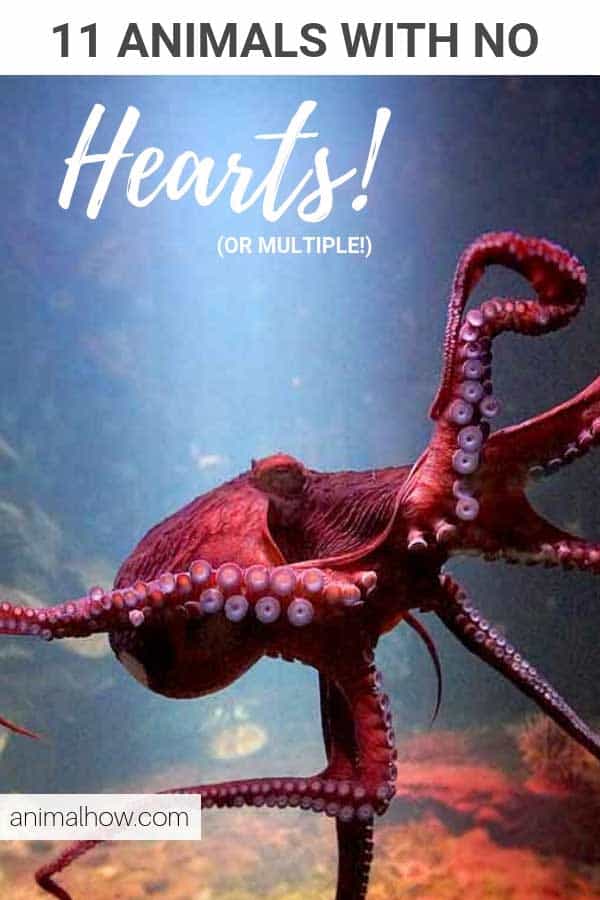
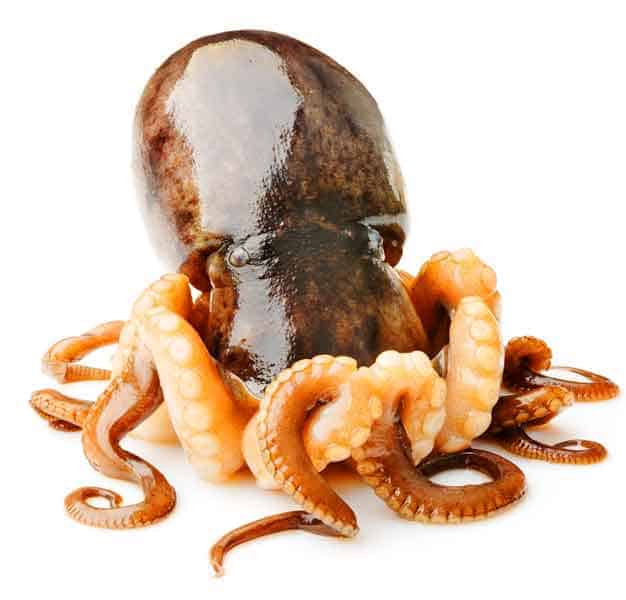
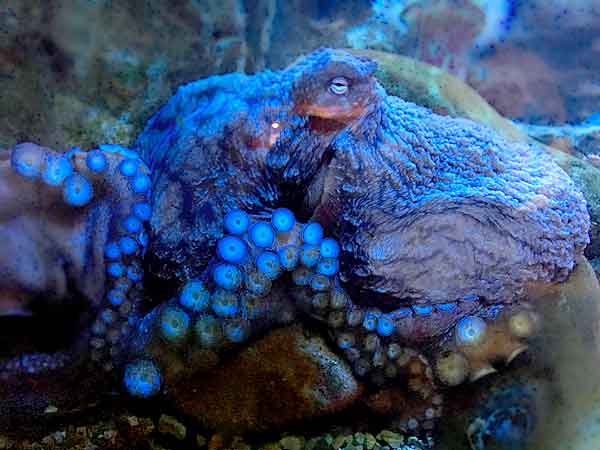
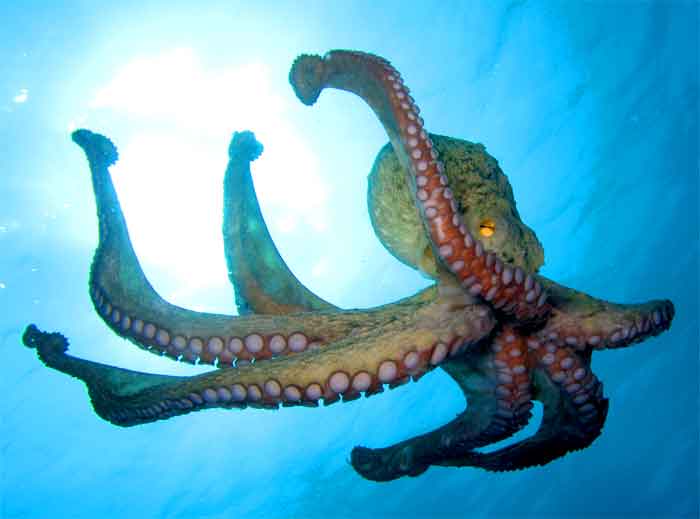
And here’s a pin for Pinterest if you feel like sharing this article with your friends.
That would mean a lot to us.






